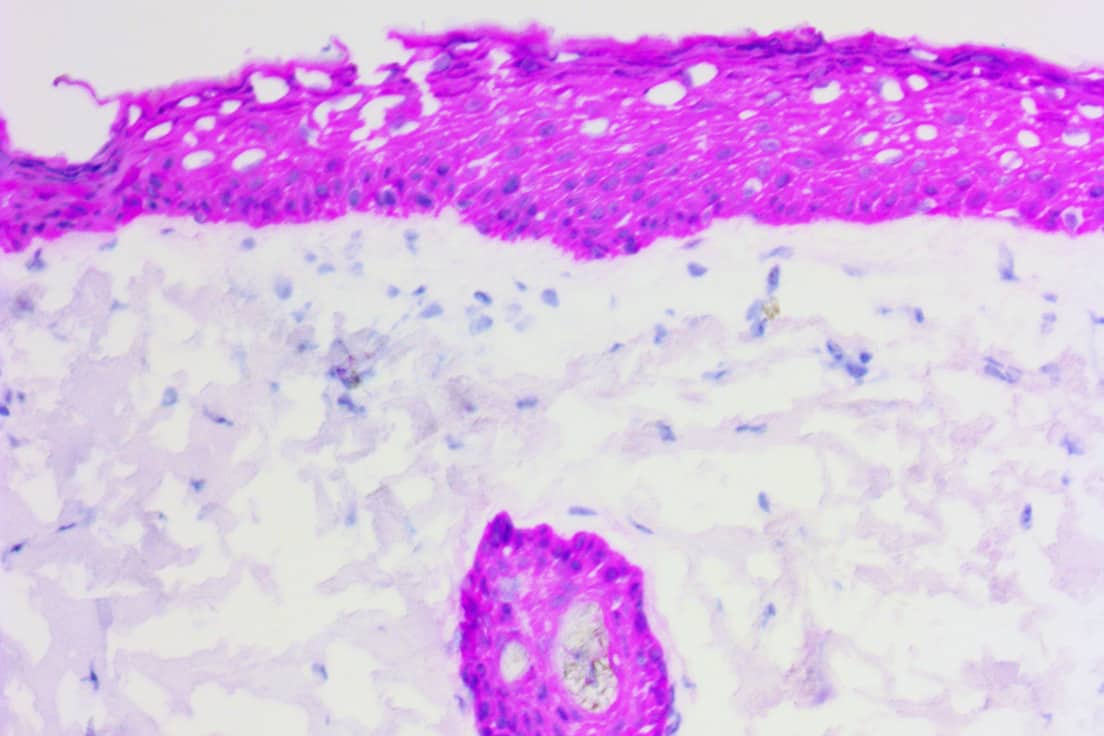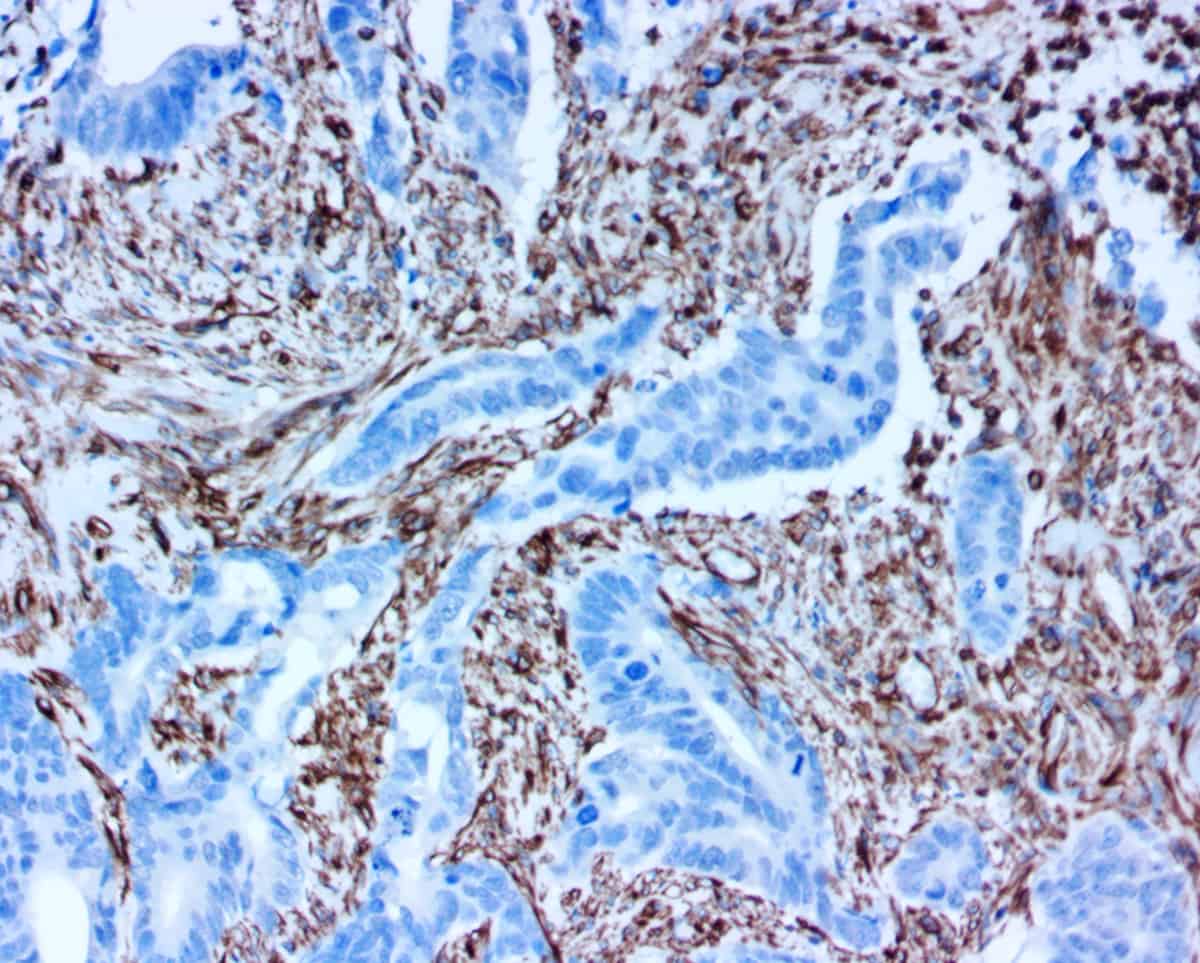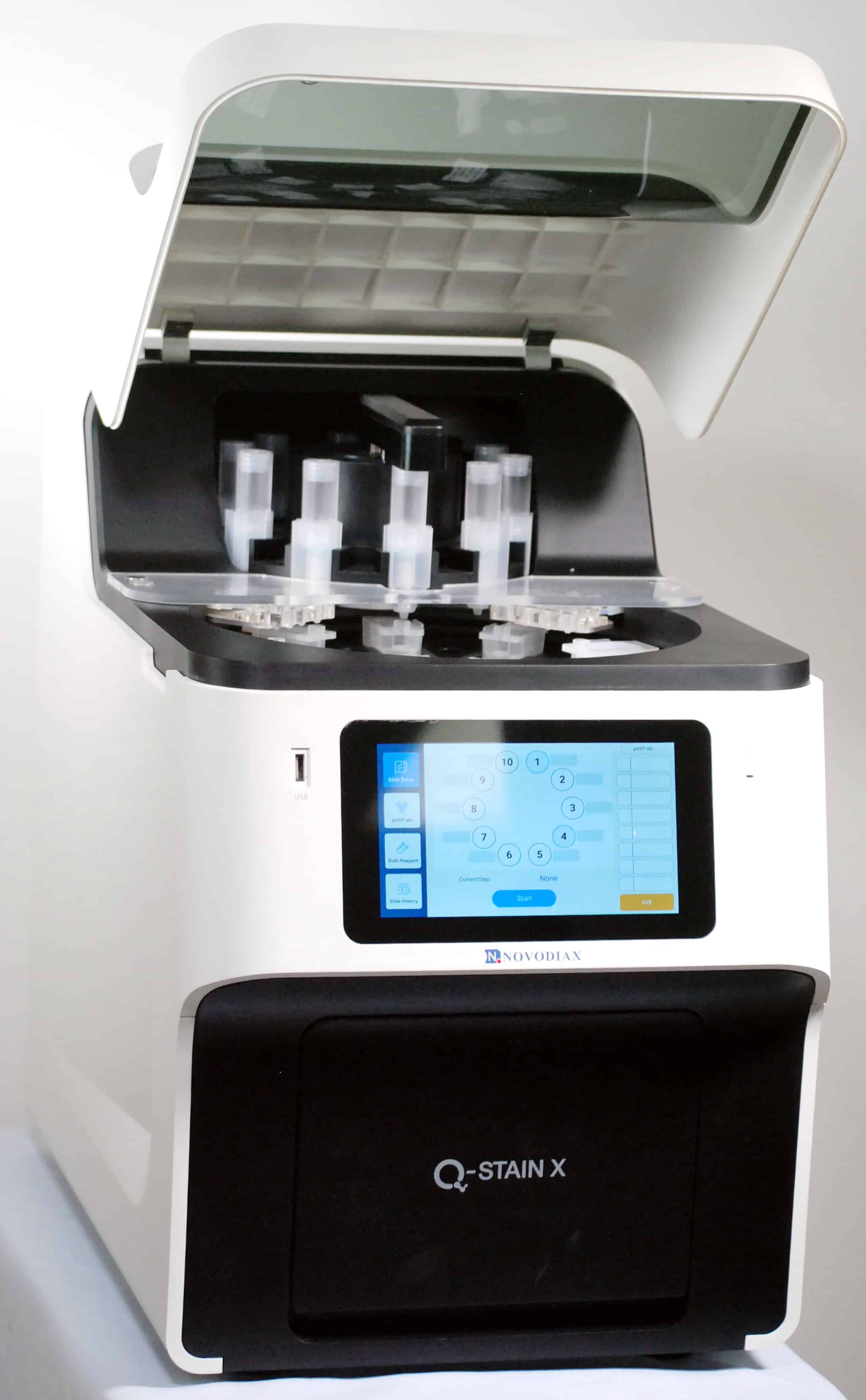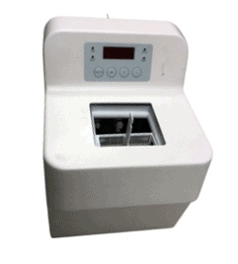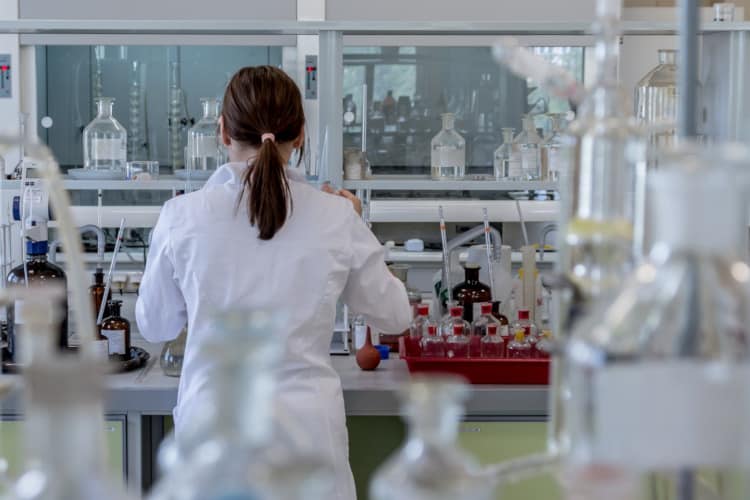Mohs Surgery Procedure
This is an interactive image, mouse over parts of the image to learn about each step in the process

The slices are stained and viewed under a microscope.
Before your surgery, a doctor or nurse will clean the area. They’ll then use a special pen to outline it and inject your skin with anesthesia. The surgeon will then remove the visible part of your cancer with a scalpel and put a temporary bandage on the excision.
Using a microscope, the surgeon examines all the edges and underside of the tissue on the slides and, if any cancer cells remain, marks their location on the map. The physician then lets you know whether you need another layer of tissue removed.
After evaluating the sections from stage 1, the surgeon will determine where the cancer cells remain and will take another section. Stage 2 sections are typically smaller than stage 1.
The surgeon will remove another layer of skin. Then, while you wait, the lab work begins again. This entire process is repeated as many times as needed until there are no more cancer cells.
If needed, the surgeon will remove another layer of skin, but only where the cancer cells remain. The tissue will be sent to the lab for processing and microscopic analysis by the surgeon to determine if any cancer cells remain.
Additional stages will be required for more invasive tumors. The surgeon will evaluate the stained images from each stage to determine the presence or absence of cancer cells from the entire perimeter of the tumor.
Using a microscope, the surgeon examines all the edges and underside of the tissue on the slides and, if any cancer cells remain, marks their location on the map. The physician then lets you know whether you need another layer of tissue removed.
If the margins are not clear from stage 2, stage 3 tissue will be processed and evaluated in the same way.
Once the site is clear of all cancer cells, the wound may be left open to heal or the surgeon may close it with stitches. This depends on its size and location. In some cases, a wound may need reconstruction with a skin flap, where neighboring tissue is moved into the wound, or possibly a skin graft

A – H&E stain
B – ihcDirect stain of the same tissue shows significantly improved differentiation between healthy and cancerous cells.


